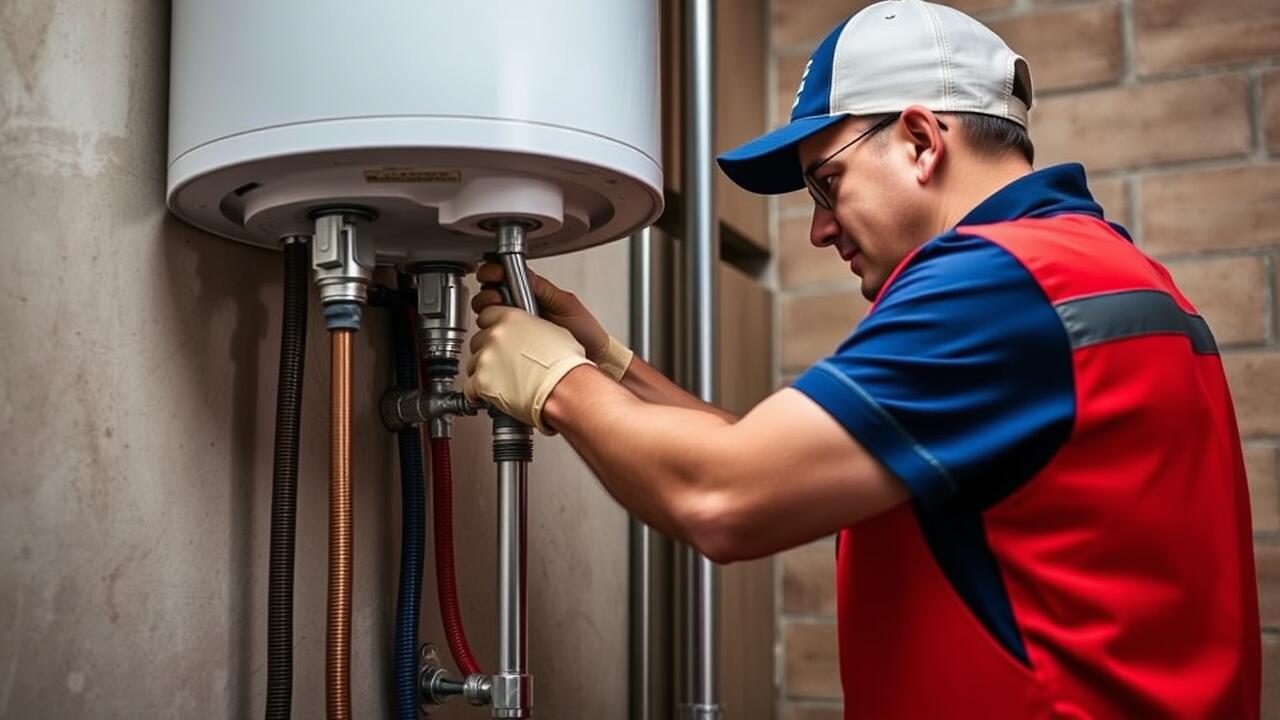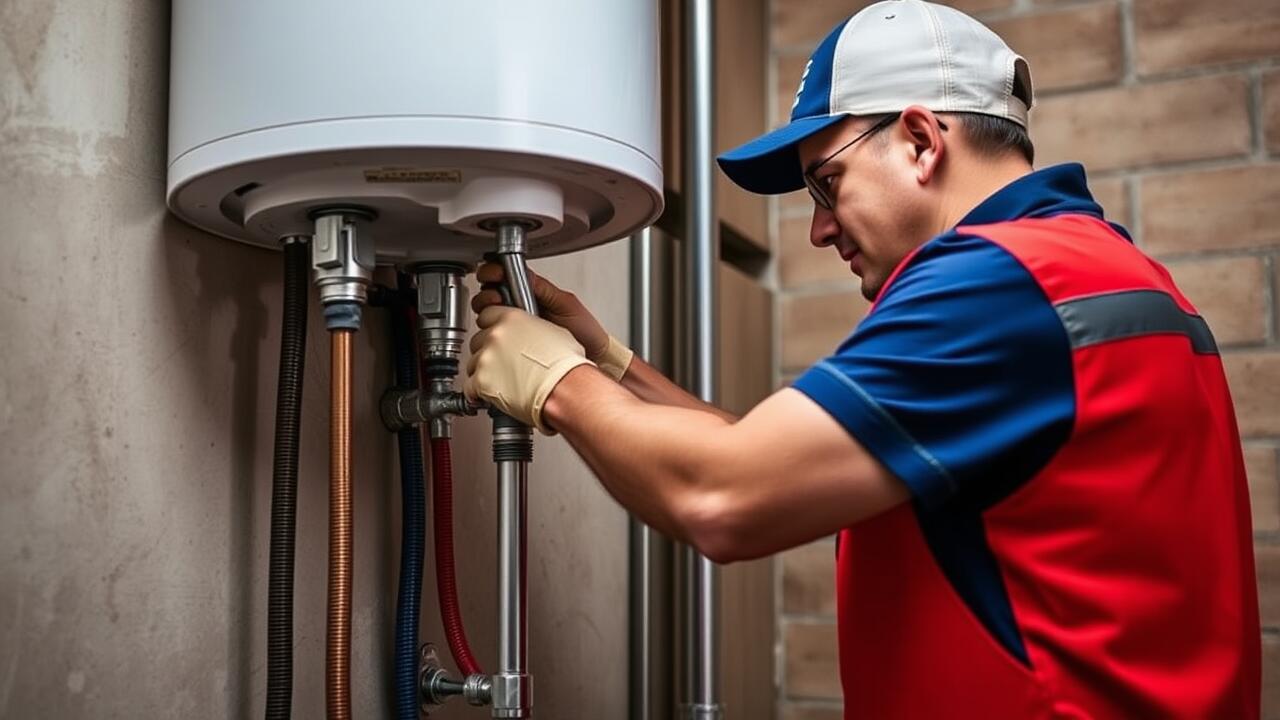
Choosing the Right Replacement Water Heater
When choosing the right replacement water heater, you should first consider the type of heater that best fits your home’s needs. Options include tankless, traditional tank-style, and solar water heaters. Each type comes with its benefits and drawbacks, depending on factors such as energy efficiency, space availability, and hot water usage patterns. Evaluating these elements will help you make an informed decision about the best system for your household.
Another important factor is sizing. A water heater that is too small may not provide enough hot water, leading to inconvenience during use. Conversely, an oversized unit can waste energy and increase costs. It's also wise to consult with local experts, like those offering water heater repair in Van Nuys, Los Angeles, for insights on the most suitable options for the local climate and energy rates. This approach will ensure you install a water heater that meets your demands without excessive energy loss.
Factors to Consider When Selecting a New Unit
Selecting the right replacement water heater is crucial for ensuring comfort and efficiency in your home. Consider the type of fuel source you want to use, whether it be gas, electric, or solar. Gas units typically heat water faster and may offer savings on energy bills, but you need access to a gas line. Electric water heaters can be easier to install and require less maintenance. Additionally, you'll want to evaluate the capacity of the unit; it should meet your household's hot water demands without running out during peak usage times.
Don't overlook the energy efficiency ratings of potential models. Higher efficiency ratings might result in increased upfront costs, but they often pay off over time through lower monthly utility bills. Additionally, look into warranties and the reputation of manufacturers to ensure a quality purchase. If you have specific concerns or complex installation needs, consulting with professionals, such as those offering water heater repair in Van Nuys, Los Angeles, can provide valuable insights and assistance in making the best choice.
Installing the New Water Heater
When it comes to installing the new water heater, the first step is to ensure that the area is clear and safe for work. Before lifting the unit, check the manufacturer's instructions for specifics about placement and spacing. It's essential to position the water heater in a way that allows adequate airflow, particularly for gas units. Make sure all necessary tools and materials are readily available. If you feel uncertain or encounter any issues, seeking assistance from professionals is a wise choice. Water heater repair Van Nuys, Los Angeles, can provide valuable support if complications arise.
Once the unit is correctly positioned, the next task is connecting the plumbing and electrical components. Follow the manufacturer's guidelines meticulously to ensure a proper fit. Use appropriate fittings and pipe compounds to prevent leaks. For electrical connections, follow applicable safety codes and regulations. If the model is a gas water heater, remember to check the venting carefully. Completing these steps accurately is crucial for the optimal performance of the water heater and for ensuring safety in your home.
Detailed Instructions for Proper Installation
Before starting the installation of your new water heater, ensure that the area is clear and that necessary tools are available. Read through the manufacturer’s instructions provided with your unit. Begin by shutting off the power or gas supply to the old water heater to avoid any accidents. If you have a tank system, drain the existing unit completely before attempting to remove it. Carefully disconnect the plumbing lines and remove the old unit, taking note of how everything is connected for reference during the installation of the new unit.
Next, position the new water heater in the designated space. Make sure it is level to prevent any potential leaks. Install the water inlet and outlet connections based on the plumbing layout you observed during disassembly. For electric units, connect the electrical wires following the appropriate guidelines. Test the connections to ensure they are secure. If you're unsure at any point, consider seeking professional assistance for water heater repair in Van Nuys, Los Angeles, to guarantee proper installation and compliance with local codes.
Connecting the Plumbing and Electrical Systems
Connecting the plumbing and electrical systems of your new water heater requires careful attention to detail. Start by shutting off the water supply and draining the old unit to prevent any spills. If your new water heater uses the same connections as the old one, you can often attach the supply and discharge pipes without adjustments. For those using copper piping, soldering may be necessary to ensure tight seals. Always use Teflon tape on threaded connections to prevent leaks.
When dealing with electrical connections, ensure the power supply is turned off at the circuit breaker. Follow the manufacturer's instructions for wiring the new unit. If the existing wire gauge does not match the requirements of the new heater, it’s vital to upgrade it accordingly. For those unsure of the electrical work, looking into professionals skilled in water heater repair in Van Nuys, Los Angeles can provide peace of mind and ensure compliance with local codes.
Guidelines for Hooking Everything Up
Once you have chosen your new water heater, the next step is to connect the plumbing and electrical systems properly. Start by ensuring that the water supply is turned off and that any remaining water is drained from the old unit. Use plumber's tape to secure the connections and avoid leaks. Attach the cold water inlet and hot water outlet pipes, ensuring that they are tightly fitted. It's essential to pay close attention to the direction of flow indicated on the tank to prevent any mishaps.
Following the plumbing connections, focus on hooking up the electrical system if you have an electric water heater. Make sure to turn off the power at the breaker box before beginning any work. Attach the wiring according to the manufacturer's instructions, ensuring connections are secure and insulated. After completing this process, double-check all connections for leaks or loose fittings. If you encounter any issues during installation, consider reaching out to a professional service for assistance, such as water heater repair Van Nuys, Los Angeles, to ensure safety and compliance with local codes.
FAQS
Can I really replace a water heater myself?
Yes, many homeowners are capable of replacing a water heater themselves, especially if they have some basic plumbing and electrical skills. However, it's essential to consider your comfort level with DIY projects and local code requirements.
What tools do I need to replace a water heater?
Common tools required include a pipe wrench, adjustable wrench, screwdriver, drill, and possibly a multimeter for electrical connections. Additional materials like Teflon tape, connectors, and a new water heater installation kit may also be necessary.
What factors should I consider when choosing a new water heater?
Consider the size and capacity needed for your household, the type of fuel source (electric, gas, or solar), energy efficiency ratings, and your budget. It’s also important to check local codes and regulations.
Are there safety precautions I should take during the installation?
Yes, always turn off the power and water supply before beginning the installation. If you're working with gas, ensure proper ventilation and check for leaks after installation. Using personal protective equipment, such as gloves and goggles, is also advisable.
What should I do if I encounter problems during the installation?
If you run into issues that you cannot resolve, it's best to stop and consult a professional plumber or electrician. Attempting to fix complicated problems without expertise can lead to safety hazards or further damage.

